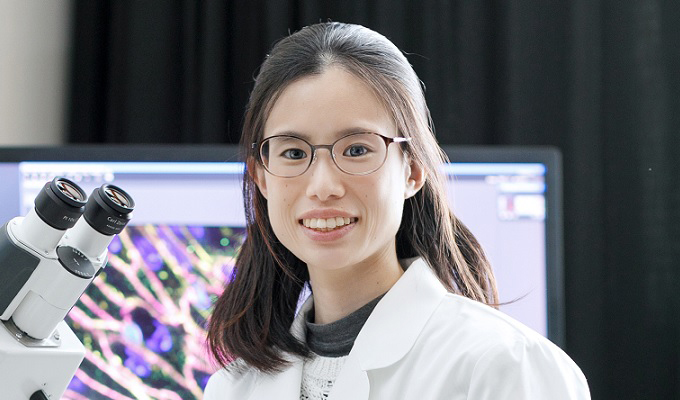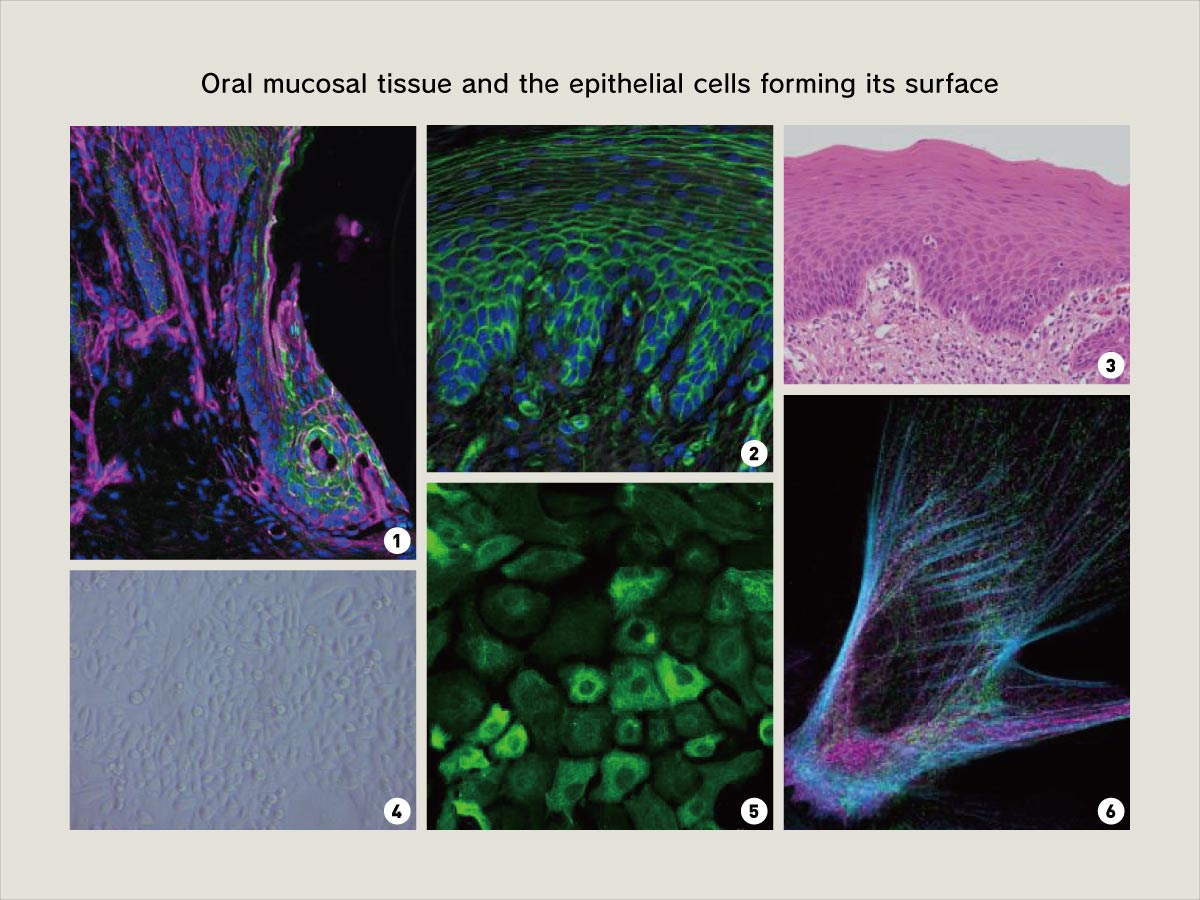Illuminating the actions of the oral mucosa’s environmental sensor molecules to help people to maintain their oral mucosae in a healthy condition

Research overview
Aiming to Help People Maintain Good Health through Research on Ion Channels in Oral Mucosa Research on the Wonders of Oral Mucosa
The oral mucosa aids proper functioning of the mouth. I found that the expression of temperature-activated ion channels was altered in patients who complained of pain and/or dryness in their oral mucosae while I was researching the role of ion channels in the human oral mucosa. The feeling of surprise and excitement that I felt when I found the differences under a microscope has remained in my mind, and I have studied the wonders of the oral cavity, which is acutely sensitive to a wide variety of stimuli.
■ Potential of Ion Channel TRPV4
The structure of the oral mucosa is similar to that of the skin. Although oral mucosa is easily damaged by food and other substances, it also heals very easily and does not form scars, which is considered an ideal healing form. However, this mechanism is not yet sufficiently understood.
Focusing on the fact that the oral cavity lies in a temperature environment that is different to those found elsewhere in the body, we think that the thermosensitive ion channels may play an important role in the oral mucosa’s healing. We are currently continuing research into illuminating how TRPV4 (transient receptor potential vanilloid 4) ion channel works at the cellular- and tissue-levels along with the mechanisms involved by studying the effect of TRPV4 on pathological mouse models of the wound healing process or periodontal diseases. As part of this effort, we have also focused on cytoskeleton molecules and conducted analyses that use immunohistochemistry and super-resolution imaging.
We have reported based on our previous studies that the thermosensitive ion channel TRPV4 is involved in the pathologies of painful oral mucosae, periodontal diseases, and oral cancer.
■ Appeal of Research
Our laboratory features a technique of visualizing molecules in tissues through immunostaining and super-resolution microscopy. A microscope that enables observation of their intricate structures allows the cells and tissues to be displayed in an elaborate and beautiful architecture. The more we investigate, the more discoveries we uncover, and the more intrigued we become. We are now exploring recent technological advances such as digitization and AI to allow us to discover even more from the data that we have steadily collected.
-

(1) Mouse junctional epithelium at the gingiva-tooth interface showing the immunostaining of β-catenin (green), filamentous actin (magenta) and nuclei (blue).
(2) Localization of filamentous actin (green) in mouse oral mucosal tissue.
(3) Human oral mucosal tissue stained with hematoxylin-eosin.
(4) Phase-contrast image of primary culture of mouse oral epithelial cell.
(5) Mouse oral epithelial cell showing distribution of Cytokeratin 14.
(6) Super-resolution image of TRPV4 (green), filamentous actin (blue) and α-Tubulin (magenta) immunostained in mouse oral epithelial cell.
Message
We are pouring our efforts into our day-to-day research with the hope that our research results will help people maintain their oral health.
Main publications
- Shinsuke Fujii, Yudai Tajiri, Kana Hasegawa, Shinji Matsumoto, Reiko U. Yoshimoto, Hiroko Wada, Shosei Kishida, Mizuho A. Kido, Hiromasa Yoshikawa, Satoru Ozeki, Tamotsu Kiyoshima. The TRPV4-AKT axis promotes oral squamous cell carcinoma cell proliferation via CaMKII activation. Laboratory Investigation 100.2 (2020): 311-323
- Tomoko Kitsuki, Reiko U. Yoshimoto, Reona Aijima, Junko Hatakeyama, Ai-Lin Cao, Jing-Qi Zhang, Yasuyoshi Ohsaki, Yoshihide Mori, Mizuho A. Kido. Enhanced junctional epithelial permeability in TRPV4–deficient mice. Journal of periodontal research 55.1 (2020): 51-60
- Reiko U. Yoshimoto, Reona Aijima, Yukiko Ohyama, Junko Yoshizumi, Tomoko Kitsuki, Yasuyoshi Ohsaki, Ai-Lin Cao, Atsushi Danjo, Yoshio Yamashita, Mizuho A. Kido. Impaired junctions and invaded macrophages in oral epithelia with oral pain. Journal of Histochemistry & Cytochemistry 67.4 (2019): 245-256
- Mizuho A. Kido, Reiko U. Yoshimoto, Reona Aijima, Ai-Lin Cao, Wei-Qi Gao. Oral mucosal membrane and TRP channels. Journal of Oral Science 59.2 (2017): 189-193.




